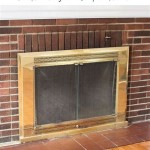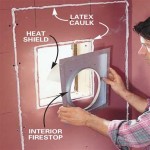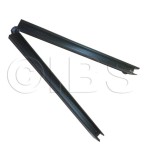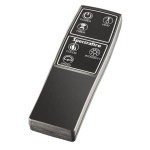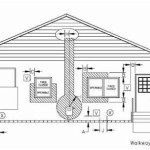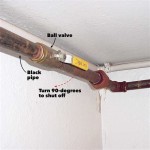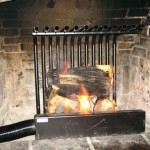Gas Fireplace Insert Replacement Logs: A Comprehensive Guide
Gas fireplace inserts offer a convenient and aesthetically pleasing alternative to traditional wood-burning fireplaces. Over time, however, the artificial logs within these inserts can deteriorate due to exposure to heat and handling. Replacing these logs can significantly improve the appearance and efficiency of the fireplace. This article provides a comprehensive overview of gas fireplace insert replacement logs, covering identification, selection, installation, and maintenance.
The primary function of gas fireplace logs is twofold: aesthetic enhancement and heat distribution. Replacement logs not only refresh the visual appeal of the fireplace, mimicking the look of real burning wood, but they also play a role in directing the heat generated by the gas burner. Damaged or incorrectly positioned logs can lead to uneven heat distribution, reduced efficiency, and potentially hazardous situations.
Before considering replacement, it's crucial to assess the condition of the existing logs. Cracks, chips, or significant discoloration are indicators that replacement is warranted. Additionally, if the logs are no longer positioned correctly or have become brittle, they may need to be replaced. A thorough inspection will help determine the extent of the problem and inform the selection process.
Identifying the Correct Replacement Logs
Selecting the appropriate replacement logs is a critical step. The wrong type or size of logs can impede proper gas flow, create dangerous carbon monoxide buildup, and reduce the fireplace's efficiency. Accurate identification of the existing logs, or understanding your fireplace insert’s specifications, is paramount.
The first step is to locate the model number of the gas fireplace insert. This number is usually found on a metal plate or sticker attached to the unit, often located near the gas valve or behind the fireplace surround. Once the model number is obtained, it can be cross-referenced with the manufacturer's documentation or website to determine the correct log set for the specific insert.
If the original logs are still intact, measuring their dimensions – length, width, and height – can provide valuable information. These measurements should be compared to the specifications of the replacement logs being considered. It is essential to ensure that the new logs are the same size and shape as the original logs to maintain proper airflow and prevent any interference with the burner.
Pay close attention to the material composition of the replacement logs. Most gas fireplace logs are made from ceramic or refractory cement. Ceramic logs are generally more durable and resistant to high temperatures, while refractory cement logs may be a more cost-effective option. Consider the burning characteristics of different log types. Some ceramic log sets are designed to produce a more realistic flame pattern than others, simulating the natural flicker of a wood fire. This often involves detailed sculpting and coloring.
Selecting the Right Type of Logs
The market offers various types of gas fireplace logs, each with its own advantages and disadvantages. Choosing the right type depends on factors such as budget, aesthetic preferences, and the specific requirements of the gas fireplace insert.
Vented gas logs are designed for use in fireplaces with a functioning chimney. These logs produce a realistic flame and significant heat output but require adequate ventilation to exhaust combustion byproducts. Using vented logs in a ventless fireplace is extremely dangerous and can lead to carbon monoxide poisoning.
Ventless gas logs, on the other hand, are designed for use in fireplaces without a chimney. These logs produce a smaller flame and less heat than vented logs but are more energy-efficient. They are equipped with an oxygen depletion sensor (ODS) that automatically shuts off the gas supply if oxygen levels in the room become too low. While ventless logs are generally safe, they require proper installation and regular maintenance to ensure optimal performance and safety.
Consider the aesthetic style of the log set. Gas fireplace logs are available in a wide range of styles, from traditional oak and birch to more contemporary designs. Select a style that complements the existing décor of the room and provides the desired visual appeal. Log sets are often available in a variety of finishes as well, increasing the ability to obtain the desired look. Some higher-end sets even include glowing embers or decorative rocks to enhance the realism of the fire.
Installing and Maintaining Replacement Logs
Proper installation and regular maintenance are crucial for ensuring the safe and efficient operation of gas fireplace logs. Incorrectly installed logs can create hazardous conditions, while neglected maintenance can lead to reduced performance and potential damage to the fireplace insert.
Before installing replacement logs, carefully review the manufacturer's instructions. The instructions will provide specific guidance on the correct placement of the logs and any necessary safety precautions. Ensure the gas supply is turned off at the shut-off valve. Position the logs according to the diagram provided by the manufacturer, paying close attention to the spacing and alignment. Correct placement is essential for proper airflow and flame distribution.
After installation, test the fireplace to ensure that the flames are burning correctly and that there are no gas leaks. Observe the flame pattern and listen for any unusual noises. If there are any issues, consult a qualified technician immediately. A professional can properly diagnose the issue and ensure safe operation of the fireplace.
Regular maintenance is essential for prolonging the lifespan of the gas fireplace logs and maintaining optimal performance. Periodically inspect the logs for damage, such as cracks or chips. Gently clean the logs with a soft brush or vacuum cleaner to remove any dust or debris. Never use water or harsh chemicals to clean the logs, as this can damage the surface.
Have the entire gas fireplace insert professionally inspected and serviced annually. A qualified technician can check the gas lines, burner, and venting system to ensure that everything is functioning properly. They can also identify and address any potential safety hazards.

Napoleon Gl24e Vented Gas Log Set 24 Inch

How Long Do Gas Logs Last To Replace Fireplace

Real Fyre 24 White Birch Gas Log Set Us Fireplace

Realfyre Valley Oak Vent Free Gas Log Set 16 Inch

Realfyre Rustic Oak Vented Fireplace Gas Log Set 16

The Best Gas Log Sets For 2024 Fireplaces Direct Learning Center

When To Replace Gas Fireplace Logs Propane Georgia

How Often Should You Replace The Logs In A Gas Fireplace Flame Company

Fireplaces Inserts Wood Gas Fireplace Xtrordinair

Valor 534jl 650jl Replacement Logs 4003795 4003796 4003797 4003798 4003800 4003801
Related Posts

